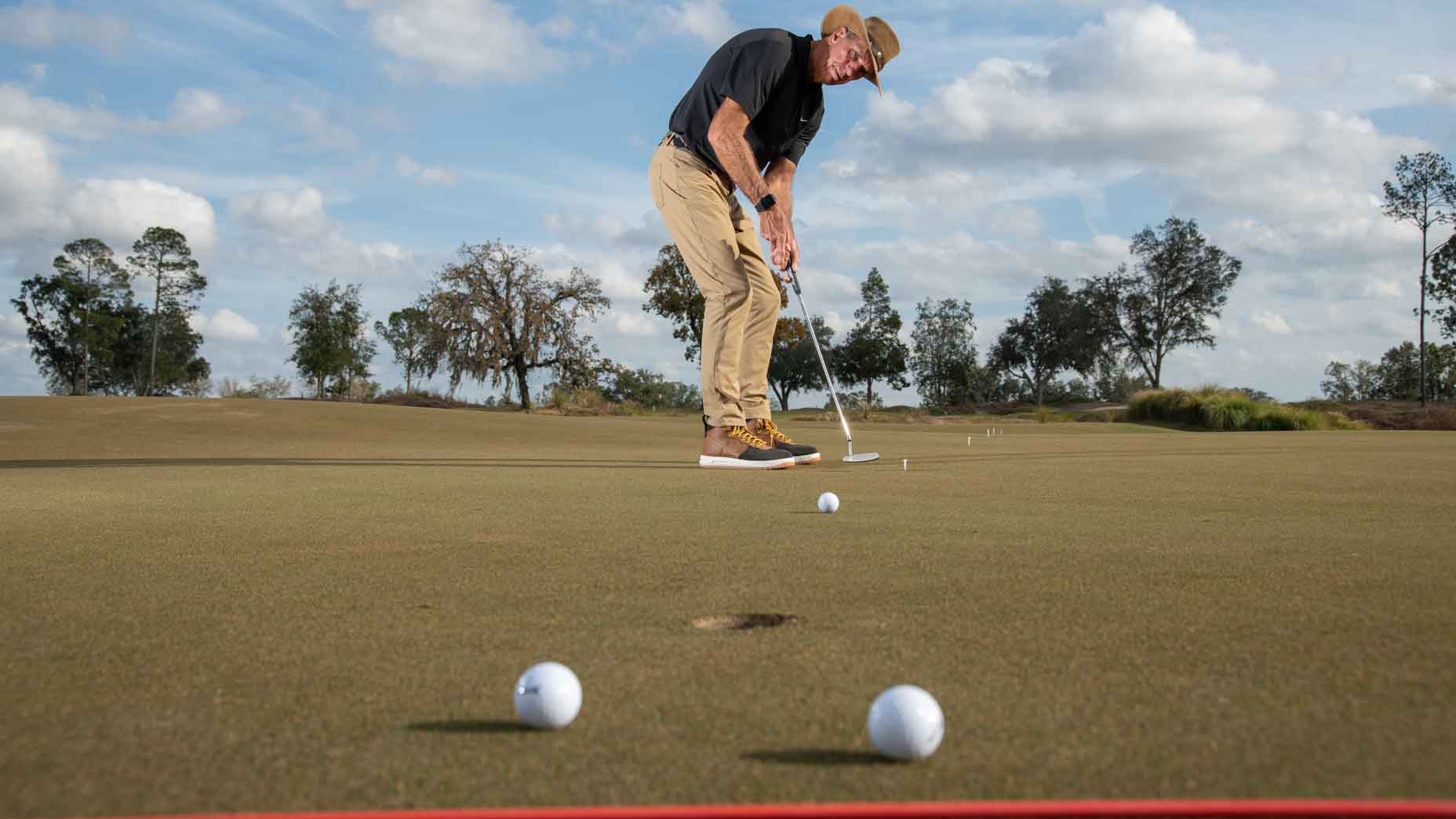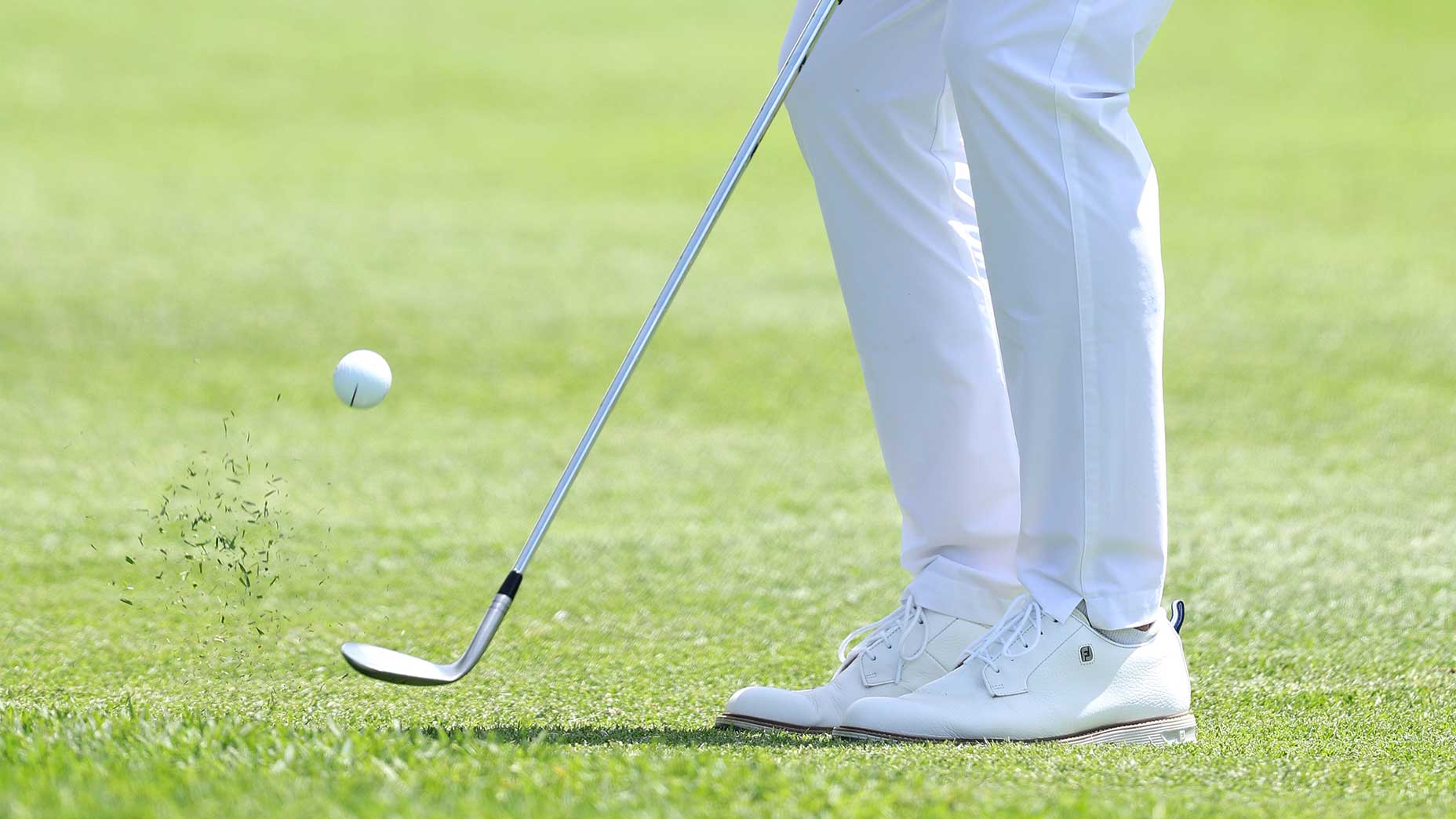When it comes to improving your scores, the short game can be the key differentiator. If you have consistent success, you’re probably happy with your scorecard. But if you’re struggling, you probably leave a round disappointed for leaving a few (makable) shots out there.
What makes the short game so tricky is the abundance of shot types and club choices, as it can take some creativity to build confidence and hit the shots you want.
So how can an amateur player do this? By building the proper fundamentals in order to make a plan for any type of shot around the green.

True Spec Fitting
10 ways to make the perfect short game plan
Knowing the right questions to ask yourself to make the best decision and increase your percentages to get up-and-down is clutch, so I suggest following these 10 tips to build your rock solid short game plan.
1. Know the difference between a chip and a pitch
Golf terms can be pretty confusing, and this is one of the most misunderstood definitions. A chip is a short-game stroke where the ball will roll more than it carries. A pitch is a short-game swing where the ball carries more than it rolls. Bot the setup and swing motions are different for each as well.
2. Putt, chip, pitch
Using this decision-making “formula” can help you save strokes in the short game, as the least risky shot with the smallest margin for error is always the best choice. The smaller the stroke, the less the chance for error.
3. Putt a lot
There are plenty of places where you can consider putting. For instance, if you putt from pretty far back away from the green, you must be willing to take a large enough backstroke to reach your target. You can also. putt from the rough just off the green, but you must be willing to lean and tilt your shoulders towards the target.
If you’re able to get really good at longer putts and from putts just off the green, this will help lessen the need to hit a chip or a pitch.
4. Decide the shot type
Once you’ve ruled out the ability to putt, you need to decide if you can chip or if you have to pitch. If you have more room for roll, you should always choose to chip (since it’s less risky). So read the situation and look at what hazards you might need to carry — such as tall grass or bunkers — to make your choice.
5. Chipping fundaments and club selection
If you’ve made the decision to chip, choose the best club choice for the shot at hand, then simply use your normal setup and swing motion in order to control distance.
Grip low on the handle, narrow your stance, move the ball position center to slightly back in the stance, and lean towards the target. Next, make a putting-like stroke that’s small in size and brushes the grass.
6. Pitching fundamentals and club selection
When you’re hitting a pitch shot, it means you need to go up and over something (like a bunker or tall grass), so your club choice and setup both become extra important.
The clubs you can use for a pitch shot are your lob wedge, sand wedge, and gap wedge. All three have a high degree of loft and bounce, which will help lift the ball into the air.
Set the club properly on the bounce at setup, ensuring that the face is square or slightly open. Make sure to minimize any shaft lean — as this can cause the club to dig instead of gliding.
7. Pitching – The swing size controls distance
When hitting a pitch shot, you need to use the swing size to control the distance. Smaller swings are naturally slower and produce shorter distances, while larger swings are naturally faster, making the ball go farther.
8. Pitching – Your setup can help control swing size and distance
Some golfers don’t like taking smaller swings since they can be difficult to manage, so using your setup to control your swing size is a great way to control distance.
Simply grip the club lower and narrow your stance, which helps limit lever and flexibility in order to create a shorter backswing.
9. Pitching – The club must hit the ground
In order to pitch successfully, you need to ensure that your club’s hitting the ground — which effectively engages the loft of the club. Avoid any inclination to lift or try to help the ball into the air, as this can cause it to go too low and (likely) too far.
I always suggest taking some practice swings in order to hear the club “thump” the ground.
10. Consider a chart
Understanding your distances for each shot while using different clubs will help make you a short-game guru. For this reason, try charting your short game by writing down the distances from various spots near the green. By taking the time to do this, I almost guarantee your scores will quickly drop.












